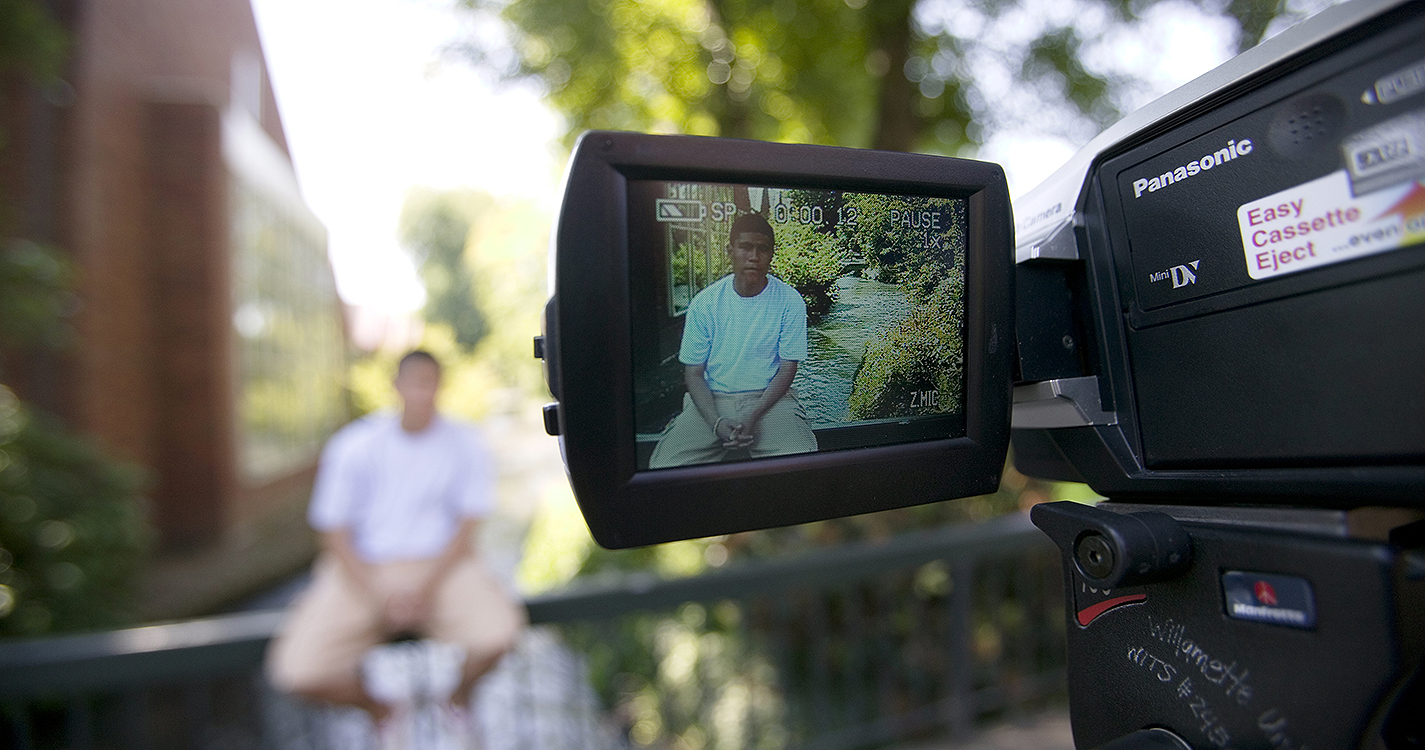Auditions for theatre programs this year may require a little extra work, but it’s easy to create a strong audition.
Colleges and universities, including Willamette, usually offer scholarships for serious theatre students. Eligibility sometimes requires auditions for their theatre program, and for now they’ll likely be online.
Consider these guidelines when filming your video:
Use what you have. All you need is a smartphone, a couple of standing lamps positioned on either side of your phone’s camera and a neutral background. Don’t worry about having perfect furniture or the best phone for filming — auditors don’t expect you to have picturesque living spaces and only care about your talent.
A tripod for your phone can make filming easier, but propping it against something works just as well. But be sure no one — including pets — can be caught walking through your frame while filming. The focus of the audition should be on you alone.
Focus on technique. Camera technique allows for a kind of intimacy that in-person auditions do not, such as playing a character with more subtlety. Rather than looking directly into the camera, place a silent partner to one side. If you’re speaking to more than one person in the scene, place other characters accordingly so the auditors understand who you are talking to and when.
Choose material that excites you. Your nervousness will decrease when you have a monologue that you can connect with and enjoy performing.
Dramatic literature is a good choice and be sure to read the whole play. Also, watch the time — if the institution requires a 2-minute audition, plan for one that lasts 1 minute and 40 seconds.
Devote time to the piece. Study the monologue's meaning and understand the beginning/middle/end of the piece. Determine who you are talking to and explore your character's objective. Find active verbs to articulate your actions.
Flaunt your range. Most schools want to see your range in an audition and how you tackle at least one play with heightened language. Monologues from Shakespeare or classic Greek plays can be strong choices for heightened language. Be sure the two pieces contrast each other, whether in theme, character energy or genre.
Think through the beginning, middle and end. Once you have rehearsed your monologues and are ready to film, create a "transition" between the two pieces. A transition helps you "transform" from one character into the next. Move a chair, take off, or put on a jacket — anything to help you transform. But remember: keep it simple and specific.
Finally, work on your introduction and the last moment. Rehearse the introduction as much as you rehearse your monologues. An example: At the beginning of your audition, introduce both of your pieces according to the following script: “Hello my name is______, and I will be doing monologues from Lauren Gunderson's ‘I and YOU’ and Shakespeare's ‘As You Like It.’”
The end of your audition is equally important as your introduction. When you say the last line, stay “in the moment” for at least three seconds more before breaking character and shutting off your camera. Edit the video later and cut to the end of the scene. This allows auditors to linger last on your acting abilities — and not your hand turning off the camera.


